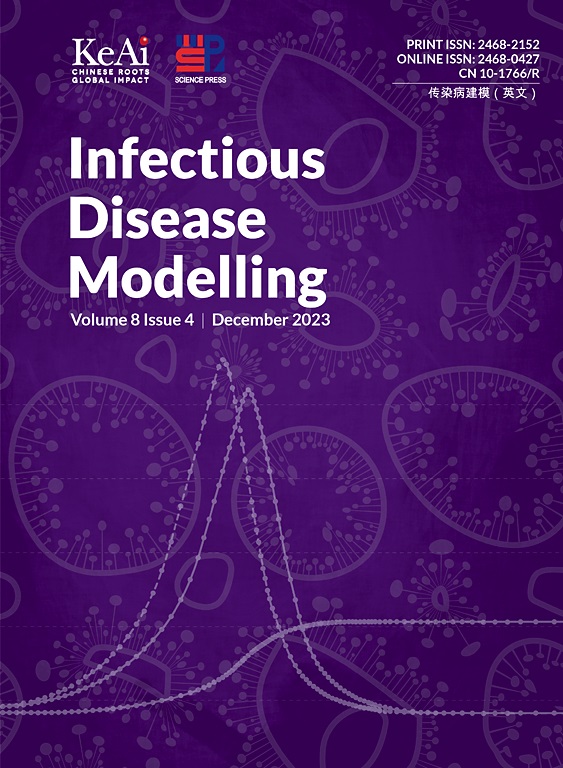Dynamics and optimal control for tuberculosis transmission via a data-validated periodic model
IF 2.5
3区 医学
Q1 Medicine
引用次数: 0
Abstract
China is the third-largest contributor to the global incidence of tuberculosis (TB), and there are significant differences in the prevalence of TB among different age groups. Therefore, it is necessary to study the contribution of adolescents to the transmission of tuberculosis. Given that tuberculosis in mainland China exhibits periodic transmission characteristics, a non-autonomous differential equation model that considers age stage and periodic transmission has been proposed. We derived the basic reproduction number R0 of this model and proved the global asymptotic stability of the disease-free equilibrium when R0 < 1, as well as the persistence of the disease when R0 > 1. We estimated the basic reproduction number R0 = 1.18, which indicates that tuberculosis in mainland China is of low endemicity. Sensitivity analysis tells us that the adolescent group has a significant impact on the transmission of tuberculosis and is an indispensable force. Furthermore, we constructed a tuberculosis transmission control model and proposed four optimal control strategies, calculated the strategy-related benefits (ACER) and the incremental benefits between strategies (ICER), and further provided targeted recommendations for controlling tuberculosis transmission among different groups.
基于数据验证周期模型的结核病传播动力学与最优控制
中国是全球结核病(TB)发病率的第三大贡献者,不同年龄组的结核病患病率存在显著差异。因此,有必要研究青少年对结核病传播的贡献。鉴于中国大陆结核病具有周期性传播特征,本文提出了一个考虑年龄阶段和周期性传播的非自治微分方程模型。导出了该模型的基本繁殖数R0,并证明了R0 >; 1时无病平衡点的全局渐近稳定性,以及R0 >; 1时疾病的持续性。估计基本繁殖数R0 = 1.18,表明结核病在中国大陆的流行程度较低。敏感性分析告诉我们,青少年群体对结核病的传播有重大影响,是不可或缺的力量。构建结核传播控制模型,提出4种最优控制策略,计算策略相关效益(ACER)和策略间增量效益(ICER),为不同人群间控制结核传播提供针对性建议。
本文章由计算机程序翻译,如有差异,请以英文原文为准。
求助全文
约1分钟内获得全文
求助全文
来源期刊

Infectious Disease Modelling
Mathematics-Applied Mathematics
CiteScore
17.00
自引率
3.40%
发文量
73
审稿时长
17 weeks
期刊介绍:
Infectious Disease Modelling is an open access journal that undergoes peer-review. Its main objective is to facilitate research that combines mathematical modelling, retrieval and analysis of infection disease data, and public health decision support. The journal actively encourages original research that improves this interface, as well as review articles that highlight innovative methodologies relevant to data collection, informatics, and policy making in the field of public health.
 求助内容:
求助内容: 应助结果提醒方式:
应助结果提醒方式:


